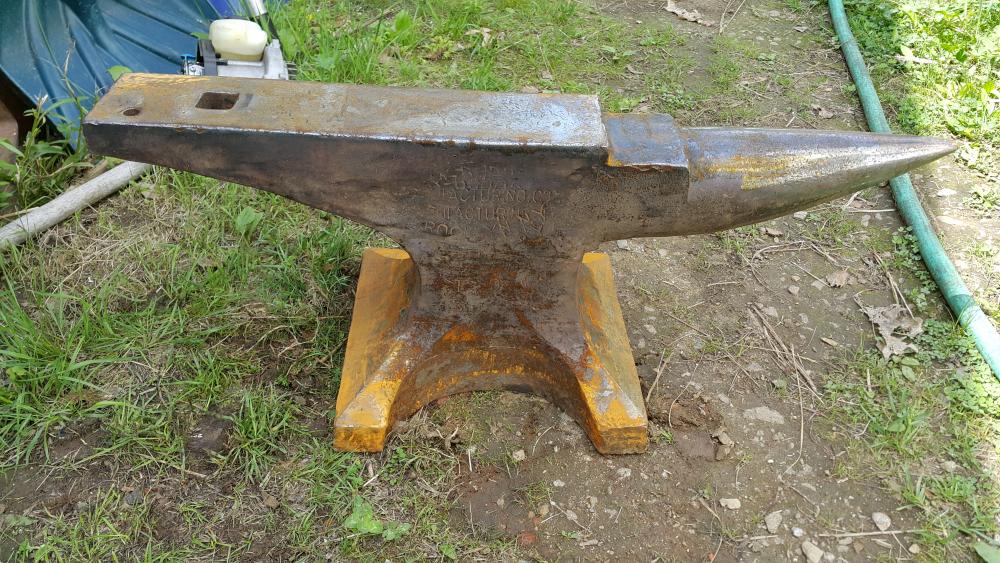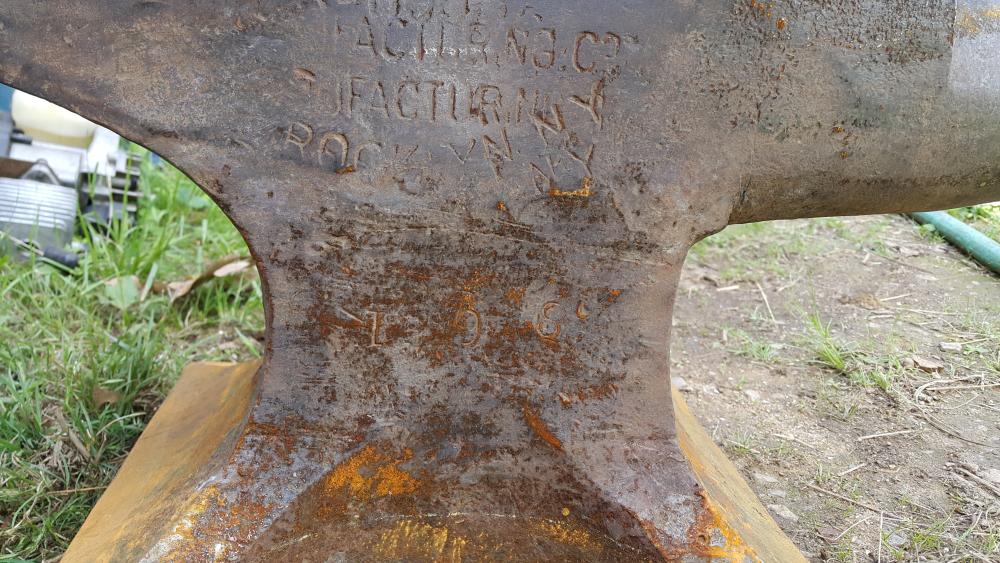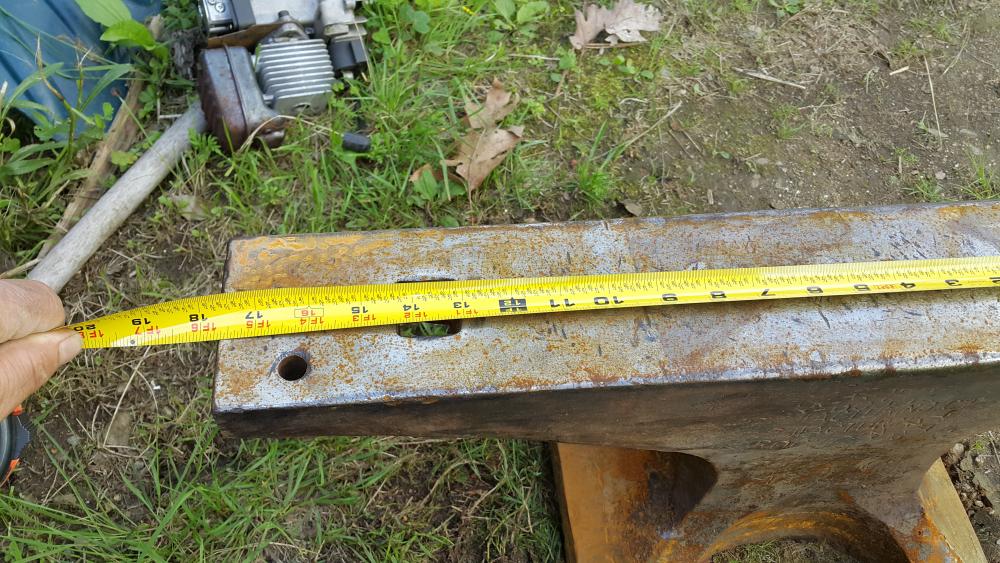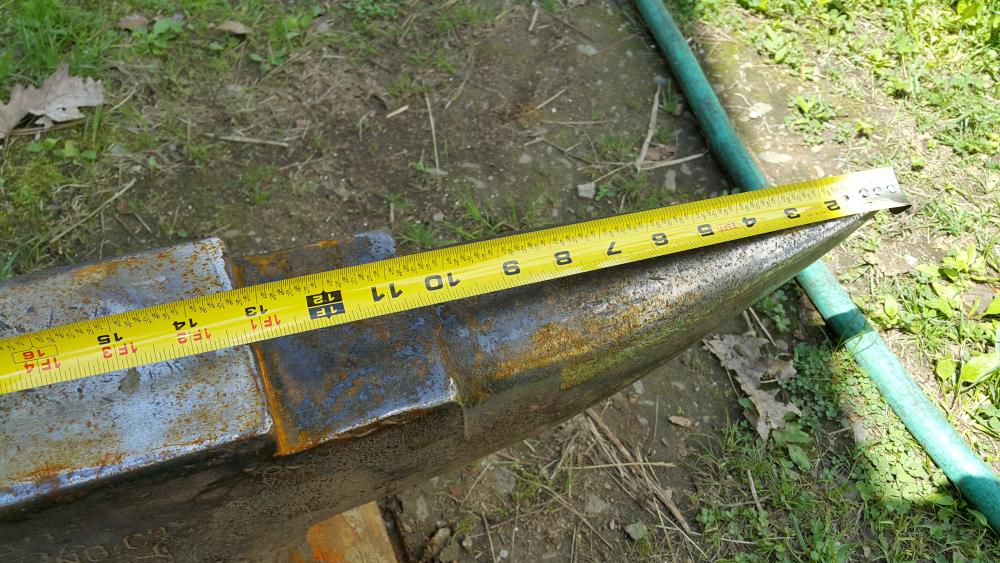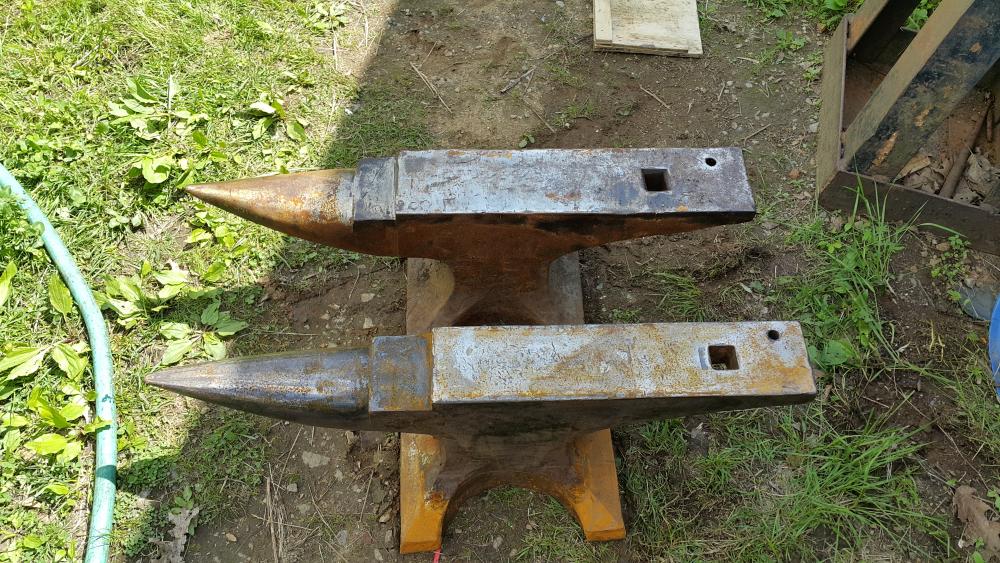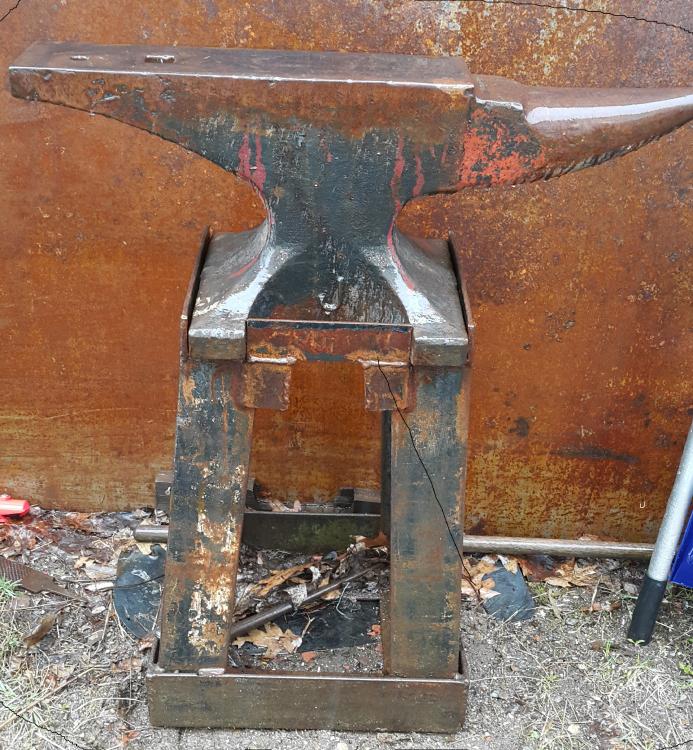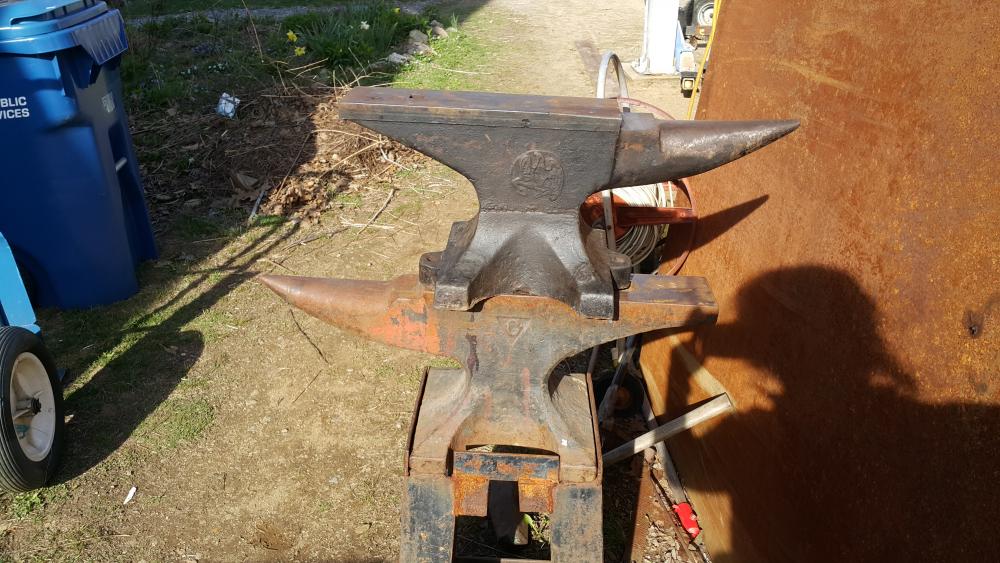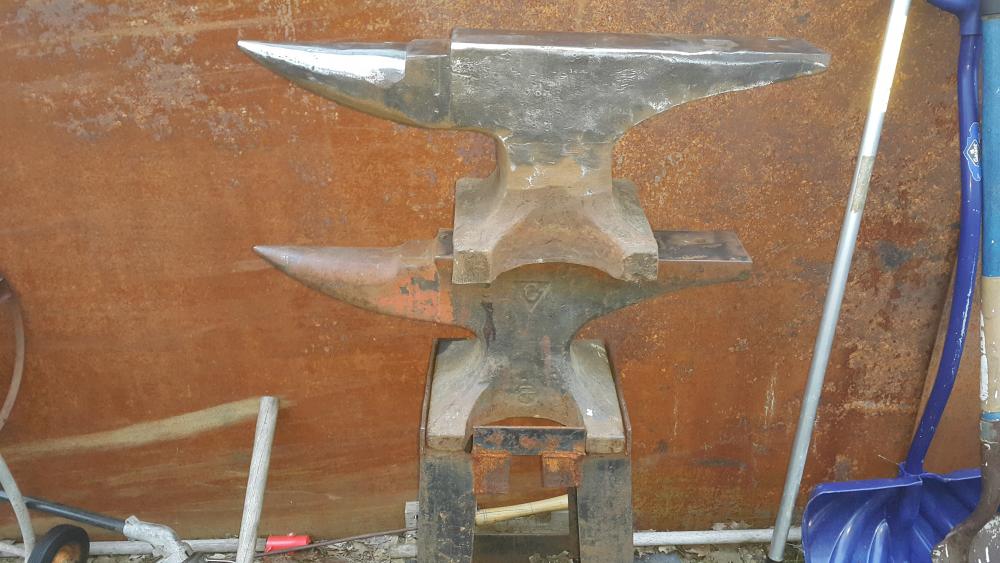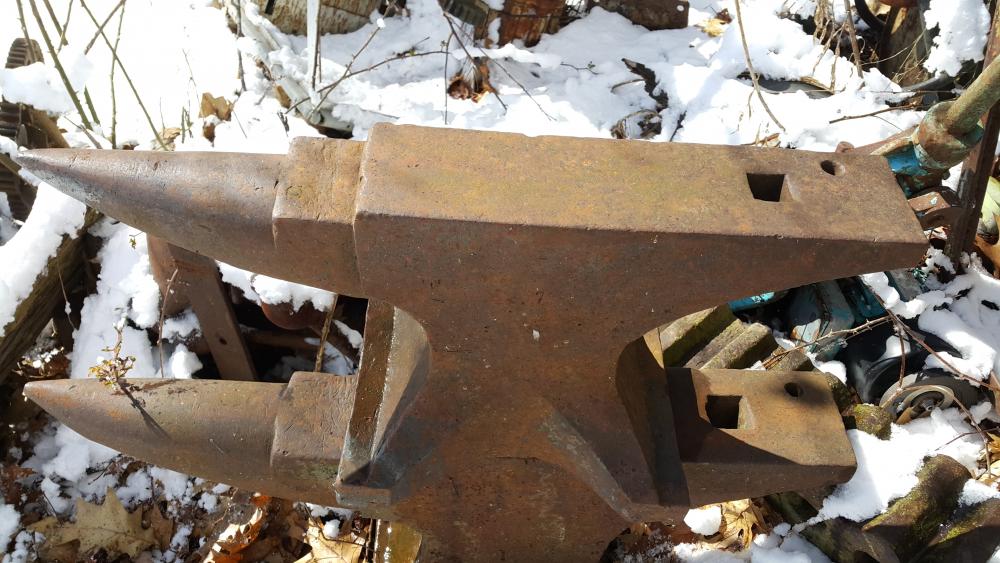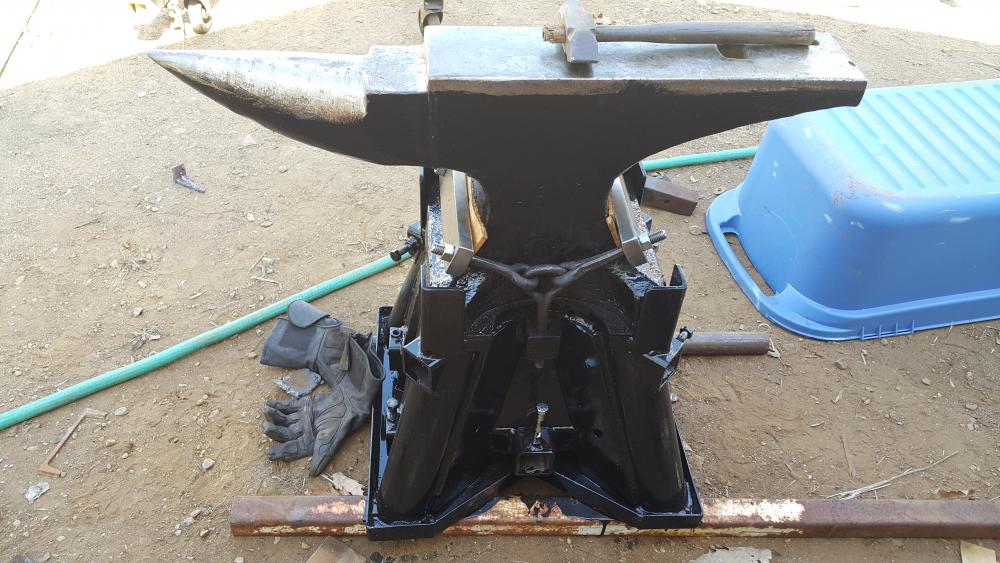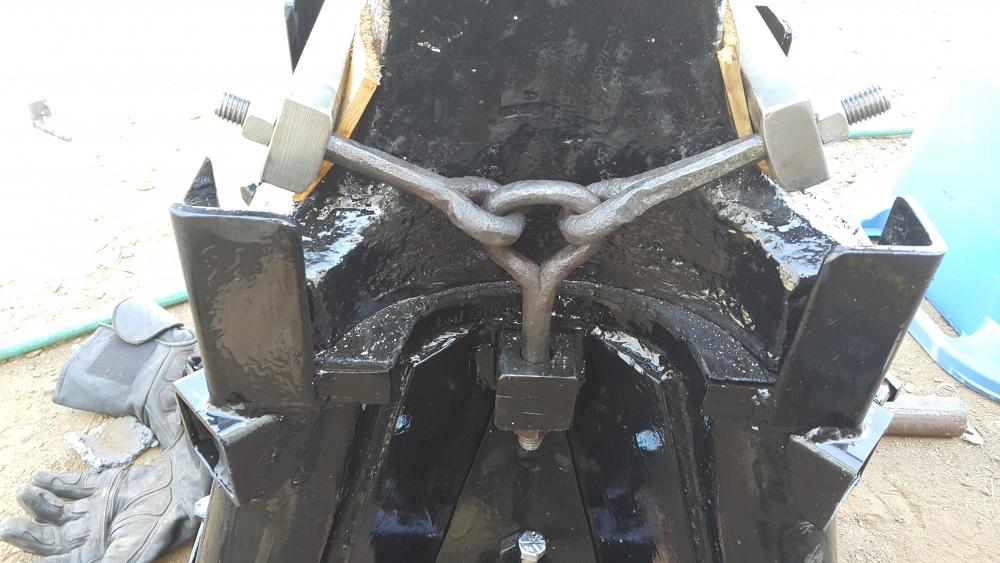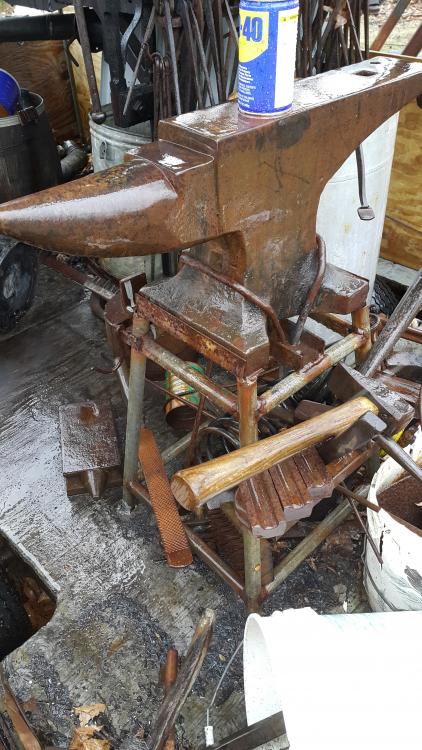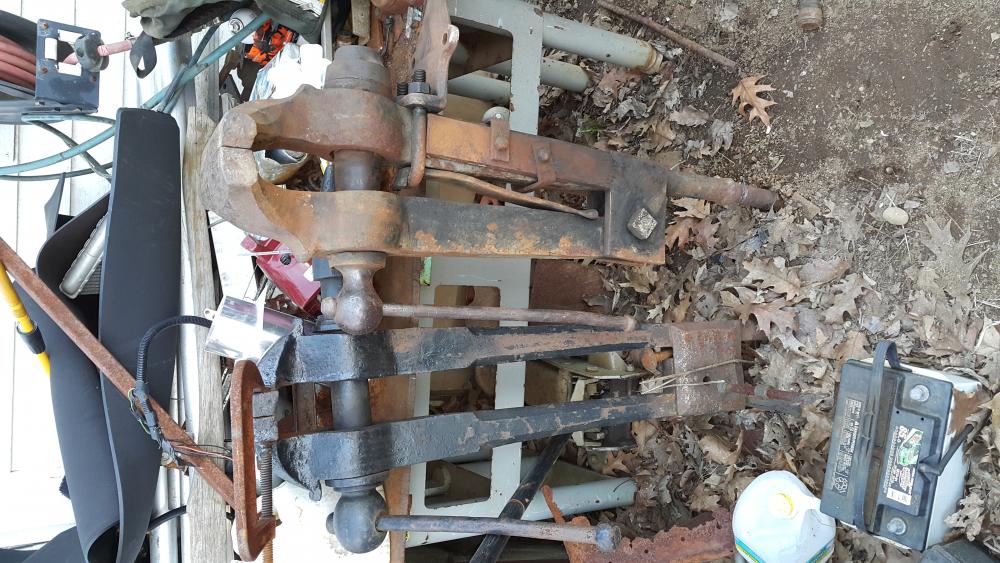
allessence
Members-
Posts
27 -
Joined
-
Last visited
Content Type
Profiles
Forums
Articles
Gallery
Downloads
Events
Everything posted by allessence
-
Got me another beauty.. This is a rather strange bird Hay Budden in 198lbs form.. I have never seen a Hay Budden like this.. Also, has 2 serial numbers.. In the usual spot the number is Higher than the one on the back heel.. 165020 and the serial on the other side foot is 162702 It has no step from waist to horn, long horn, small pritchel hole 1/2", only 4" wide 1.125 hardie hole.. Has nothing in common with another Factory standard dimensioned 200lbs Hay Budden.. Excellent width for colonial hardware..
-
YUp you stole it..
-
Wow, No steals.. Not sure for a couple of hundred I think you stole it.. Nice anvil.. and looks in great shape to boot..
-
Nice anvil.. Did you find it locally?
-
A2 is a decent steel to work with.. Just have to watch your interforge temperatures..
-
You are correct.. It is a 2 piece anvil.. And it is also what I call a high top.. The ones I have seen starting with A in the serial number actually have a shorter table to top height.. Looks like a few places were fixed.. Not a biggy.. The 2 piece HB's with high top are my favorites.. the HB204 above you can see is a low top 2 piece and even the horn has a slightly different shape/profile..
-
Nice vise for sure.. Congrats
-
200 Columbian on stand for dirt work.. Was designed for the Trenton 155 as well but repurposed to keep the Columbian off the ground. Fisher Eagle 150 in just about brand new condition.. Original paint on top of the Columbian 200lbs 204 HB, Trenton 209 on top of a Henry Wright 330lbs
-
Here is my HB 368 on the new fabricated 250lbs stand I put together.. It has accessory shoes built in and can accommodated up to 3.5" or height adjustment. With close up of the retention setup.. With the anvil strapped down there is nearly no ring.. The stand is designed to also be bolted down to the floor or have weight added inside.. Here is my HB 175 mounted in the Demo trailer on a stand that originally held a Trenton (german) 155lbs.. Stand maybe weighs 20lbs as I was trying to keep it super light.. Also made it 20 years ago.. Time flys. 3/4 galv water pipe.. I'm surprised it still going strong since it doesn't have any diagonal supports..
-
My Champion 400 came with a clamp that wrapped around the pipe and was nutted onto the lower portion of the housing just at the flange.. Sadly the clamp broke as it was cast iron when I was putting the pipe on going to the forge. Don't even know where the clamp broken pieces are as that was 15 years ago and moved a few times.. Maybe I'll find it when I move into the new shop and finally unload all the boxes..
-
I haven't had the 400 apart all the way.. But key thing is to keep them well lubed even in storage.. Sadly mine was dead quite with very little use on it and i didn't cover it one winter.. The next year it made noise.. not bad but still had bearing damage.
-
When I make my 10" I might part with 1 of them but that won't happen for sometime..
-
Meet James Hay, of Hay-Budden
allessence replied to Black Frog's topic in Anvils, Swage Blocks, and Mandrels
Wow, Very interesting.. Nice find.. I wonder when they moved from the shop floor into management only or whether they continued to work as shop men? -
I prefer my anvils lower by about 2".. I want my hammer with loose arms and relaxed hand to be at a slight down hill throw or angle This allows for me to move over to the far side of the anvil and by just changing my position my back hand comes up which is good for me when working longer bars and forging tapers or balls on the ends..
-
I have an 8.5" no name and just picked up an 8" Columbian. Sadly around here the larger vises anything over 5.5" are tough to come by as are larger anvils over about 250lbs.. Vises of larger size are going for big money.. The one I have is maybe the twin in the picture as they are the same MFG.. Mine is an older die forged Wrought iron.. I can't get the picture to be the correct orientation..
-
to Brush or not to brush
allessence replied to Francis Trez Cole's topic in Blacksmithing, General Discussion
One of the strongest goals I have is to make the product with hammer and anvil.. Finishing by any means (filing, sanding , sand blasting, etc, etc) I refused to use it.. Never really have been a big fan as I taught myself to hammer it all the way to finished.. (some items you have to file for the finish so there are exclusions). Now with that being said I worked for 10 years as a professional blacksmith and I am a purist. (only time I would use a drill was making gates, drilling a hole to be tapped or suffolk latch thru pins.) Truth is even the old time smiths knew the faster a job got done the more profit there was and at the turn of the century when electric arc welders came onto the scene or tire shrinkers before that or keg made shoes.. Anything to work faster to get more profit in the pocket.. Anyhow, anytime you can speed up the time frame you will increase productivity and hopefully make the job easier so you can do more.. and make more.. Larger anvil, power hammer.. guilotine swage.. spriing swedges, Swage blocks went out just as tire shrinkers did.. Once there was a faster way... Oh, and as a blacksmith perfects his/her skill set the work will also start to look the same even if its custom stuff vs stuff they make day in and day out.. -
Some modern oils are not compatible with Brass or bronze and lots of the Champion blowers use a worm gear drive made of these materials. Using a good grade of oil is cheap insurance to another 100 years of use I use a mobil 600 series.. While Mobil SHC 600 Series Specific applications include: Filled for life gearboxes, especially high ratio/ low-efficiency worm gears Remotely located gearboxes, where oil change-out is difficult Low and high temperature applications yes it leaks out of the Champion 400 as the labyrinth seals are terrible but for a good quality blower it's a small cost in it's overall operation.. Besides that Just a few drops before use fits the bill and even after a few days of non use I can take the plug out and turn it over and still see oil clinging to the surfaces..
-
Thanks Steve.. Still finding my way around here.. :)
-
https://plus.google.com/photos/102533765376830276101/albums/6078192448508166753
-
to Brush or not to brush
allessence replied to Francis Trez Cole's topic in Blacksmithing, General Discussion
I use a wire brush, Also use a butcher block brush with the carbon steel bristles.. Also use a farriers rasp with the end ground down to a wood chisel profile.. Also use water on the anvil and sometime use a wire brush on a grinder.. It really all depends of the operation at hand.. If doing lots of forge welding on heavier cross sections i have a tendency to use the butch brush or the rasp's chisel end to scrape off the accumulated flux after the weld is solid but before the final finish heats which if the flux was left on will create dents from the thick coatings. If you take an orange heat to remove the flux it certainly comes off easier and sometimes you have to take a higher heat to remove it but at that point the wire brush works just as well. Once removed then the wire brush is usually adequate to clean up at the end.. If making hardware (thumb latches) usually there is no reason to wire brush till the end as a clean up measure... I have also found it really depends on the amount of metal moved during each heat and forging process.. Cleaning of the anvil can be just as important.. And this gets scraped of residue and scale as need be.. -
Hay-Budden anvil catalogue from 1914/15
allessence replied to Timothy Miller's topic in Anvil Reviews by brand
The later variety of Hay Buddens are solid steel from the waist up.. In the past I have completely heated the face and reforged the corners and leveled the face and then re hardened the complete anvil with good results ending up with essentially a new anvil.. This is the way they did it in the olden days and the reason I really love the later HB anvils (more modern shape).. You don't have to worry about face separation in the redressing process.. Worse case is when they have cut into the face with a cutting torch.. No good way to fix it if the scars are to deep. It's a big process but to save some of these from being ruined with hardfacing or milling it's the best way... Last one I did was nearly 20 years ago now but the process remains the same.. -
What size anvil do you use?
allessence replied to Glenn's topic in Anvils, Swage Blocks, and Mandrels
330lbs Henry Wright, 209lbs Trenton, 175lbs Hay Budden, 150lbs Hay Budden, 155lbs Trenton... I use the 175lbs for regular work, 330 for sledging work.. The others for teaching.. -
anvil horn ''left or right''
allessence replied to Hofi's topic in Anvils, Swage Blocks, and Mandrels
I used to run the horn to the left and am right handed... I then worked with a guy who was right handed and kept his horn to the right.. Turns out for turning an eye it's easier for me with the horn to the right as this makes a nice even blow as the same angle as the curved part of the horn vs working over the horn on the left.. -
Hello from Rutland, MA... I ended up here from SFT.com. Been a lover of Iron for 32 out of my 42 years. Been working with Iron since I was 10 and started forging right around the same time. Did it professional full time for 13 years then moved into Farrier work. I've done Wheelwright work, tooling, hardware, Decrotive wrought iron, Ningu, axes, etc, etc. I'm not artistic nor an artist. I'm a trades person. Old time blacksmith. Do it to get it done.... Much more a utilitarian... Function and form are beautiful. Don't have many pictures on the computer but here are a few I just snapped of some 2 tyne forks AKA Vieny roasters. Thanks and nice to be here. Jennifer https://picasaweb.google.com/115339085090475041930/Blacksmithing?authkey=Gv1sRgCNGX5eiQ4MrDpwE The attachments are full res. Sorry about that. I have included a link to my online pics for easy of viewing.
